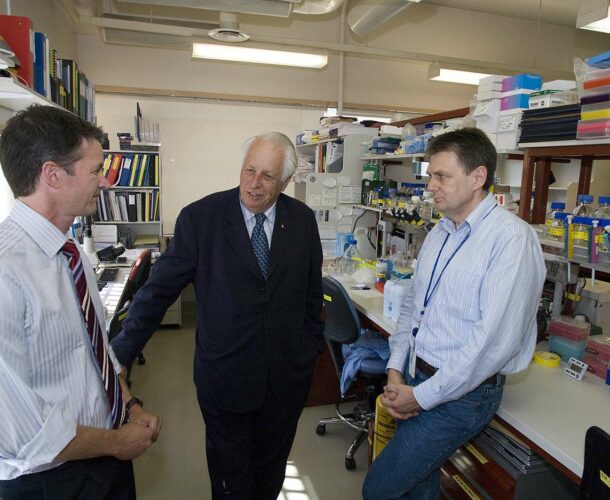The parasite Plasmodium falciparum, which causes the deadliest form of human malaria, has at least 60 different disguises it can adopt in its quest to hide from its host’s immune defences.
When the parasite comes under attack from its host’s immune system, it can change disguise by switching on variants of its VAR gene family.
Sixty different costumes
P. falciparum cells have 60 different VAR genes, scattered in clusters on all of its chromosomes. The total number of VAR variants in the parasite’s global gene pool probably runs to tens of thousands, but each individual cell has a choice of only 60, of which just one is active at any time. The other 59 are inactivated.
Using RNAi gene-knockout technology, Professor Alan Cowman and Dr Brendan Crabb show that the rest are silenced by a gene called PfSIR2 (silence information regular). When PfSIR2 is switched off, all the VAR genes switch on simultaneously,
Their research is published in the journal Cell1.
Possible drug targets
The discovery presents possible drug targets for malaria control and eradication.
A drug that suppresses SIR2 would force the parasite to reveal its full wardrobe of to the immune system, which could then deploy antibodies and cytotoxic T-cells to destroy any antigenic variant, and retain a ‘memory’ of each for future, rapid responses.
Alternatively, a drug that locked SIR2 ‘on’, preventing the parasite switching to a new antigenic guise when its current cloak reaches its use-by date, would give the immune system a fixed target.
1 Duraisingh MT, Voss TS, Marty AJ, Duffy MF, Good RT, Thompson JK, Freitas-Junior LH, Scherf A, Crabb BS, Cowman AF. Heterochromatin silencing and locus repositioning linked to regulation of virulence genes in Plasmodium falciparum. Cell. 2005 Apr 8;121(1):13-24.




